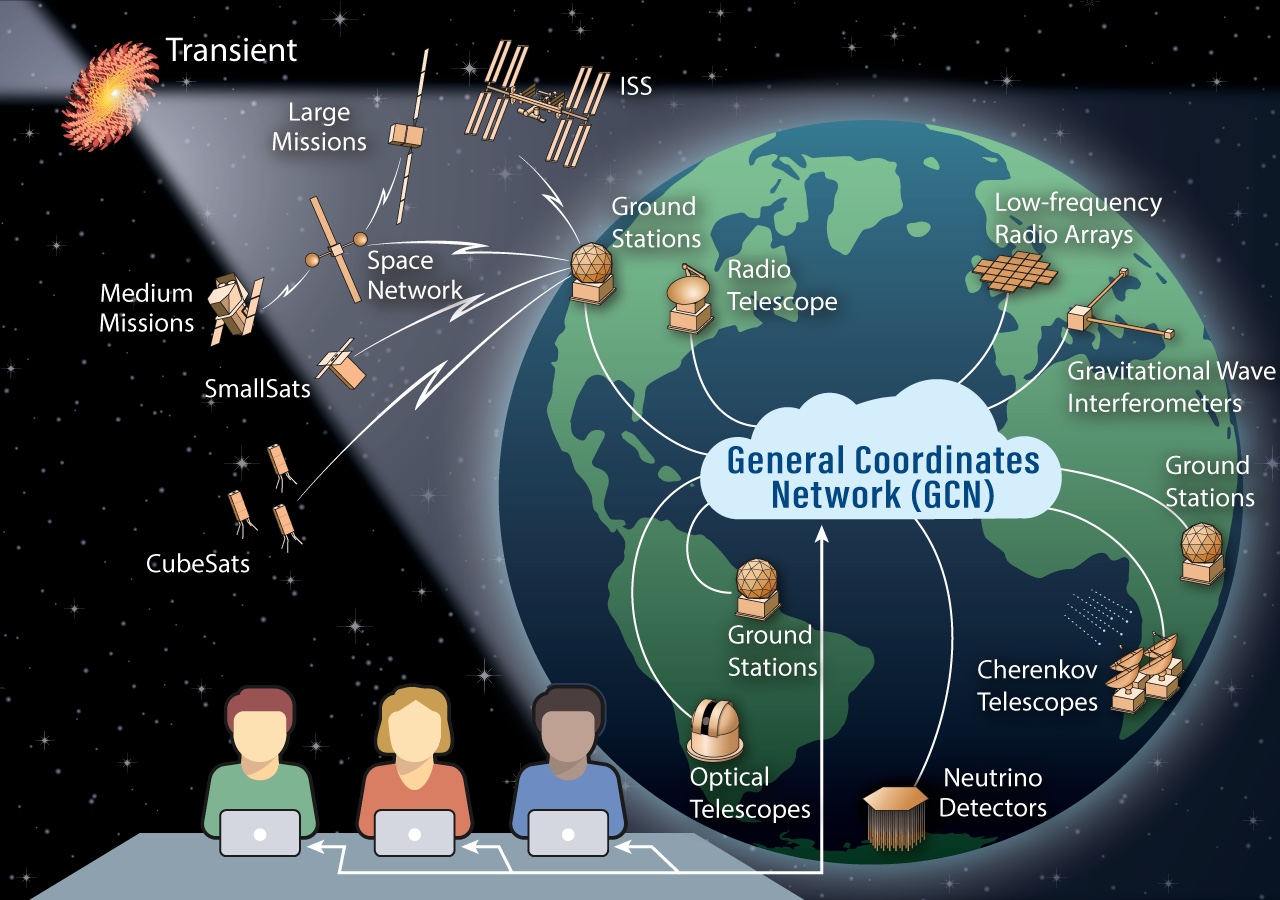UMD Physicists Advance NASA’s Mission to ‘Touch the Sun’
- Details
- Category: Research News
- Published: Wednesday, September 11 2024 05:24
Those who say there’s “nothing new under the sun” must not know about NASA’s Parker Solar Probe mission. Since its launch in 2018, this spacecraft has been shedding new light on Earth’s sun—and University of Maryland physicists are behind many of its discoveries.
At its core, the Parker Solar Probe is “on a mission to touch the sun,” in NASA’s words. It endures extreme conditions while dipping in and out of the corona—the outermost layer of the sun’s atmosphere—to collect data on magnetic fields, plasma and energetic particles. The corona is at least 100 times hotter than the sun’s surface, but it’s no match for the spacecraft’s incredible speed and carbon composite shield, which can survive 2,500 degrees Fahrenheit. Last year, the spacecraft broke its own record for the fastest object ever made by humans.  Parker Solar Probe (courtesy of NASA)
Parker Solar Probe (courtesy of NASA)
This engineering feat was built to solve solar mysteries that have long confounded scientists: What makes the sun’s corona so much hotter than its surface, and what powers the sun’s supersonic wind? These questions aren’t just of interest to scientists, either. The solar wind, which carries plasma and part of the sun’s magnetic field, can cause geomagnetic storms capable of knocking out power grids on Earth or endangering astronauts in space.
To better understand these mechanisms, the Parker Solar Probe will attempt its deepest dive into the corona on December 24, 2024, with plans to come within 3.9 million miles of the sun’s surface. Researchers hope its findings will help them predict space weather with greater accuracy and frequency in the future.
James Drake, a Distinguished University Professor in UMD’s Department of Physics and Institute for Physical Science and Technology (IPST), is helping to move the needle closer to that goal as a member of the Parker Solar Probe research team.
“This mission is what's called a discovery mission, and with a discovery mission we can never be sure what we're going to find,” Drake said. “But of course, everybody is most excited about the data that will come from the Parker Solar Probe getting very close to the sun because that will reveal new information about the solar wind.”
Reconnecting the dots
Drake and Marc Swisdak, a research scientist in UMD’s Institute for Research in Electronics & Applied Physics (IREAP), have been involved with this mission since its inception. The researchers were asked to join because of their expertise in magnetic reconnection, a process that occurs when magnetic fields pointing in opposite directions cross-connect, releasing large amounts of magnetic energy.
Before the Parker Solar Probe, it was known that magnetic reconnection could produce solar flares and coronal mass ejections that launch magnetic energy and plasma out into space. However, this mission revealed just how important magnetic reconnection is to so many other solar processes.
Early Parker Solar Probe data showed that magnetic reconnection was happening frequently near the equatorial plane of the heliosphere, the giant magnetic bubble that surrounds the sun and all of the planets. More specifically, this activity was observed in the heliospheric current sheet, which divides sectors of the magnetic field that point toward and away from the sun.
“That was a big surprise,” Drake said of their findings. “Every time the spacecraft crossed the heliospheric current sheet, we saw evidence for reconnection and the associated heating and energization of the ambient plasma.”
In 2021, the Parker Solar Probe made another unexpected discovery: the existence of switchbacks in the solar wind, which Drake described as “kinks in the magnetic field.” Characterized by sharp changes in the magnetic field’s direction, these switchbacks loosely trace the shape of the letter S.
“No one predicted the switchbacks—at least not the magnitude and number of them—when Parker launched,” Swisdak said.
To explain this odd phenomenon, Drake, Swisdak and other collaborators theorized that switchbacks were produced by magnetic reconnection in the corona. While the exact origin of those switchbacks hasn’t been definitively solved, it prompted UMD’s team to take a closer look at magnetic reconnection, especially its role in driving the solar wind.
“The role of reconnection has gone from something that was not necessarily that significant at the beginning to a major component of the entire Parker Solar Probe mission,” Drake said. “Because of our group's expertise on the magnetic reconnection topic, we have played a central role in much of this work.”
Last year, Drake and Swisdak co-authored a study with other members of the Parker science team that explained how the sun’s fast wind—one of two types of solar wind—can surpass 1 million miles per hour. They once again saw that magnetic reconnection was responsible, specifically the kind that occurs between open and closed magnetic fields, known as interchange reconnection.
To test their theories about solar activity, the UMD team also uses computer simulations to try to reproduce Parker observations.
“I think that one of the things that convinced people that magnetic reconnection was a major driver of the solar wind is that our computer simulations were able to produce the energetic particles that they saw in the Parker Solar Probe data,” Drake said.
As part of his dissertation, physics Ph.D. student Zhiyu Yin built the simulation model that is used to see how particles might accelerate during magnetic reconnection.
“Magnetic reconnection is very important, and our simulation model can help us connect theory with observations,” Yin said. “I'm really honored to be part of the Parker Solar Probe mission and to contribute to its work, and I believe it could lead to even more discoveries about the physics of the sun, giving us the confidence to take on more projects in exploring the solar system and other astrophysical realms.”
Swisdak explained that simulations also help researchers push past the limitations of space probes.
“Observations are measuring something that is real, but they’re limited. Parker can only be in one place at one time, it has a limited lifetime and it’s also very hard to run reproducible experiments on it,” Swisdak said. “Computations have complementary advantages in that you can set up a simulation based on what Parker is observing, but then you can tweak the parameters to see the bigger picture of what we think is happening.”
‘Things no one has seen’
There are still unsolved mysteries, including the exact mechanisms that produce switchbacks and drive the solar wind, but researchers hope that the Parker Solar Probe will continue to answer these and other important questions. The sun is currently experiencing more intense solar flares and coronal mass ejections than usual, which could yield new and interesting data on the mechanisms that energize particles in these explosive events.
This research also has wider relevance. Studying the solar wind can help scientists understand other winds throughout the universe, including the powerful winds produced by black holes and rapidly rotating stars called pulsars. Winds can even offer clues about the habitability of planets because of their ability to deflect harmful cosmic rays, which are forms of radiation.
“One of the reasons why the solar wind is important is because it protects planetary bodies from these very energetic particles that are bouncing around the galaxy,” Drake said. “If we didn't have that solar wind protecting us, it's not totally clear whether the Earth would have been a habitable environment.”
As the spacecraft prepares for its December descent into the sun, the UMD team is eager to see what the new observations will reveal.
“One of the nice things about being involved with this mission is that it’s a chance to make observations of things that no one has seen before. It lets you go into a new regime of space and say, ‘Alright, we thought things would look this way, and inevitably they don't,’” Swisdak said. “The ability to get close enough to the sun to see where the solar wind starts and where coronal mass ejections begin—and being able to take direct measurements of those phenomena—is really exciting.”

